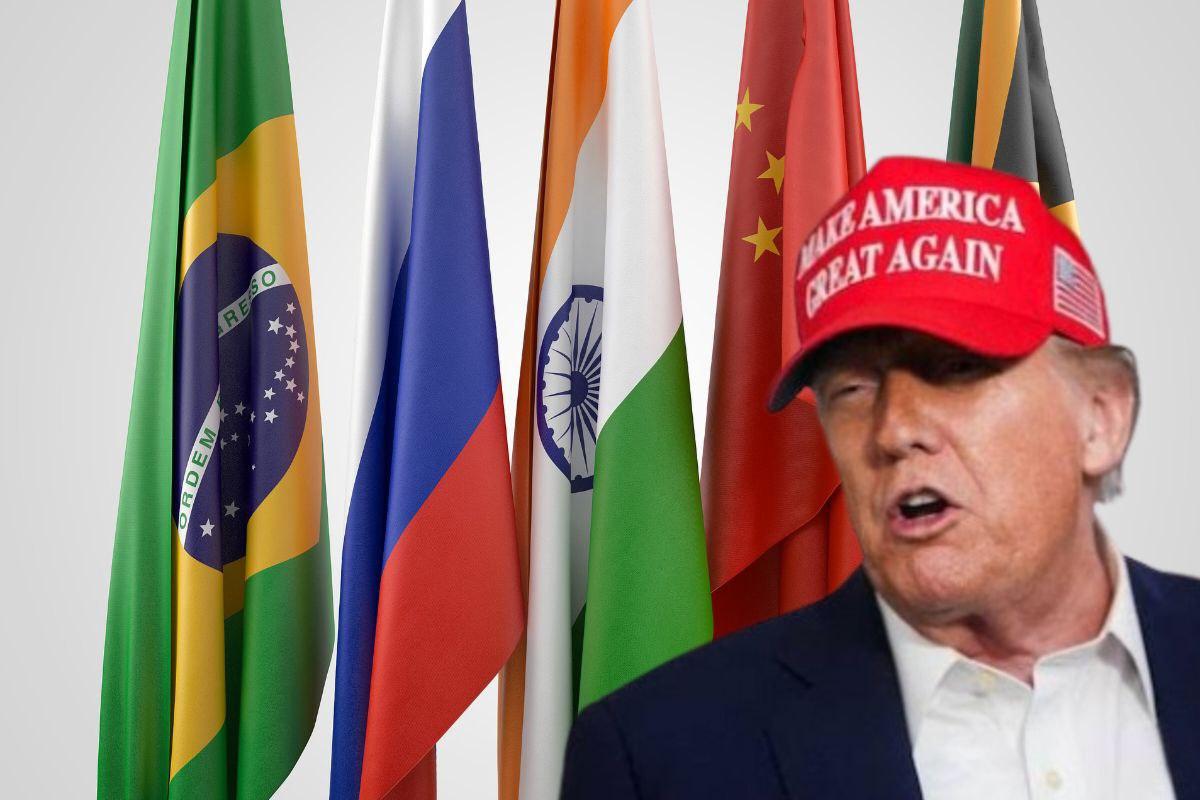
In a major geopolitical and economic development, U.S. President Donald Trump has once again grabbed global attention — this time by imposing a 25% tariff on Indian goods. The decision, which has sent shockwaves through India’s trade corridors, is not an isolated act. In fact, it is part of a larger strategy where Trump is increasing pressure on all BRICS nations — Brazil, Russia, India, China, and South Africa. The main reason? These countries are trying to reduce their reliance on the U.S. dollar and build an alternative global financial system.
Here is why Trump is targeting India and other BRICS countries — and what it means for the global economy.
India-Russia Oil Trade at the Center of the Storm
The immediate trigger for Trump’s tariff on India is its continued oil trade with Russia. Even after Russia’s growing isolation by the West, India has kept purchasing discounted crude oil from Moscow, citing its own energy security needs. This has frustrated Washington, which sees the move as India aligning economically with Russia — a direct challenge to U.S. foreign policy.
Trump responded by slapping a 25% tariff on Indian imports and warning of even more sanctions in the future. According to Trump, by continuing to trade with Russia, India is indirectly helping Moscow circumvent Western sanctions.
Putin's De-Dollarization Plan: A Game Changer
The situation escalated further after Russian President Vladimir Putin made a bold declaration. Putin said that BRICS nations must begin moving away from the U.S. dollar and start using local currencies in trade. He also revealed that BRICS is working on developing a new global currency that can rival the dollar in international transactions.
This move, if successful, would reduce U.S. influence in global trade and finance. The dominance of the dollar allows America to borrow easily, print money without hyperinflation, and impose sanctions effectively. A BRICS-led de-dollarization movement could undermine that power — and Trump knows it.
Why the U.S. Is Worried: The BRICS GDP Factor
BRICS nations together contribute nearly 37% of the world’s GDP. If they collectively reduce the use of the dollar in global trade, the impact on the U.S. economy would be huge. America’s ability to maintain economic dominance heavily depends on the dollar being the world’s reserve currency.
If BRICS successfully builds an alternative trade and finance ecosystem — with its own currency — it could trigger a chain reaction across other emerging markets. Countries in Asia, Africa, and Latin America may follow suit, further weakening dollar dominance. This is why Trump is now going after BRICS nations aggressively.
Trump’s Tariff Offensive Against All BRICS Countries
Trump's latest economic actions are not limited to India. He has imposed new or increased tariffs on all five BRICS countries:
India: A 25% tariff, citing oil trade with Russia.
Russia: Additional sanctions and tariffs, continuing long-standing pressure.
Brazil: A sharp 50% tariff, likely in response to Brazil’s support for de-dollarization efforts.
China: A massive 250% tariff on Chinese goods was imposed back in April 2025, continuing a years-long trade war.
South Africa: Increased tariffs targeting its mineral exports and trade agreements.
These measures show that the U.S. isn’t targeting India alone — it is a broad-based strategy against the entire BRICS alliance.
Trump's Tweet That Shocked the World
As tensions escalated, Trump added fuel to the fire with a controversial tweet. In his post, he said:
“The declining economies of India and China are of no concern to us.”
The statement has sparked outrage and debate across global media. While it may be political posturing, it also reveals Trump’s dismissive attitude toward two of the world’s largest and fastest-growing economies.
India and China may have slowed down in recent quarters, but they remain critical players in global growth. The tweet is likely to deepen the divide and push these nations further away from the U.S.
Is This the Start of a New Economic Cold War?
Trump’s actions indicate that the U.S. now sees BRICS not just as a group of emerging economies, but as a serious threat to its global dominance. The growing financial cooperation among BRICS members — including the New Development Bank, BRICS Pay, and talks of a new currency — points to an attempt to create a parallel world order.
This new economic rivalry may not involve armies, but it’s just as powerful. Currency systems, global trade networks, and technological infrastructure are now the real battlegrounds.
The U.S. is doing everything it can to prevent this shift — and Trump’s tariffs are just the beginning.
Conclusion: What Lies Ahead?
Trump’s latest moves signal a dramatic shift in America’s foreign and economic policy. Instead of building partnerships, the U.S. is now using tariffs and sanctions to maintain dominance. But in doing so, it may be pushing BRICS countries closer together and accelerating the very process it wants to stop — the decline of the dollar and the rise of a multipolar financial system.
India, caught in the middle of this power struggle, will have to navigate carefully. As one of the world’s fastest-growing economies, it holds the potential to lead but must now make tough choices between global alliances.
One thing is certain — the world economy is entering a new era. And Donald Trump is at the center of it.
Disclaimer:
This blog is intended for informational and analytical purposes only. The views expressed are based on publicly available news, statements, and geopolitical developments as of July 2025. It does not constitute financial, political, or investment advice.




